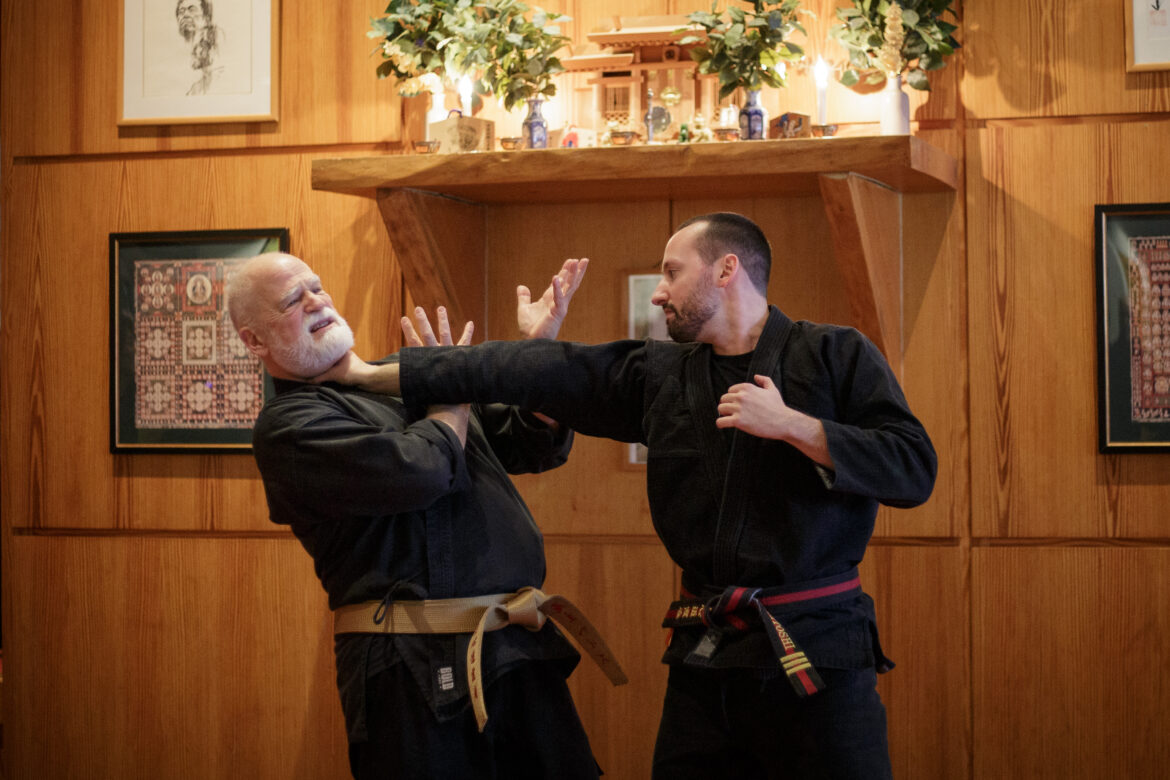 Jul
24
Jul
24
The 5 D’s of Self Defense
- July 24, 2022
- 0 Comment(s)
One of my favorite lessons that I have learned from An-Shu Hayes was his five “D” approach to technique application. Each of the kata in our To-Shin Do system has the five “D’s” present, even if they are combined into single movements. The 5 D’s are Discern, Defend, Disrupt, Deliver, and Discern, not to be confused with the equally important 5 “D’s” of dodgeball; Dodge, Duck, Dip, Dive, & Dodge. This lesson is amongst the first things taught in our Quest Center, and can be one of the most critical to put into practice.
Step number one, discern, seems self-explanatory at first glance. But why do so many people fail at this point if it is so basic? Maybe it is unfamiliarity with actual violence, or the hope that “this isn’t really happening to me,” that keeps people from accurately seeing a situation develop into an attack. Maybe it’s poor awareness, or dangerous social programming that keeps people talking when they should be bringing their hands up. Whatever it is, it isn’t uncommon for people to miss this critical initial step. The further out we perceive where the problem is coming from, the better we will be at step two.
Step two, or the second “D”, is defend. This defense is often characterized by you moving out of harm’s way or by practicing “taisabaki”. Taisabaki can be translated as “whole body movement or repositioning.” This repositioning defense can be done through simple evasion or by augmenting your position by using your arms and hands to “block” or be put into place as obstacles for your attacker to overcome.
Step three is to “disrupt” the attacker. This can be accomplished in many ways, but it often results in you moving the attacker into a vulnerable position physically, mentally, or both. So to defend, you move you, and to disrupt, you move your attacker. The disruption can be facilitated through strikes, pushes, pulls, slams, feints, and/or partially applied techniques with the goal of setting up one’s opponent to be as vulnerable as possible to step four.
Step number four is to “deliver” our primary technique. Examples include a takedown, a potentially seriously damaging strike with bare hands or a weapon, or some type of incapacitating lock-up. This strong technique is delivered with follow-through and power. The ability to stay aware and focused after executing step four is crucial to maintain as we move into step five.
Step five is a repeat of step one, discern. The ability to stay present in the moment and to take the necessary actions dictated by a dynamic scenario is harder than it sounds. There are so many ways that we can get pulled from the present in a physical altercation. If our technique at step four doesn’t produce the result that we believed that it would, we can easily be knocked mentally off balance. If step four does work, we can get caught “admiring our own handy-work” and find ourselves mentally out of the present moment. If we can stay aware and responsive, we are prepared to repeat the process as much as necessary to survive the assault.
As stated earlier, these five distinct steps can be taken individually or combined. For example, you could shift to the side and strike your attacker’s face while avoiding their grab or strike. This would allow you to combine the defend step with the disruption into one movement. You could throw up a disrupting strike or feint into your opponent’s face and simultaneously slide your foot behind your attacker’s foot to leverage them down, combining your disruption with the delivery of your primary technique. These combinations allow you to produce more results with fewer “steps,” producing effective and efficient responses.
My suggestion for those newer to our training is to try to practice each of the 5 “D’s” individually and distinctly in your randori practice. Once the idea of these steps becomes familiar and accessible to you, then begin seeing where you can combine steps while still producing all of the necessary results.
Here is a link to a great video by An-Shu Stephen K. Hayes, Founder of To-Shin Do, and my taijutsu teacher, where he breaks down the importance of being truly and effectively “discerning”: https://www.ninjaselfdefense.com/discern-2/
NinjaEveryday!
